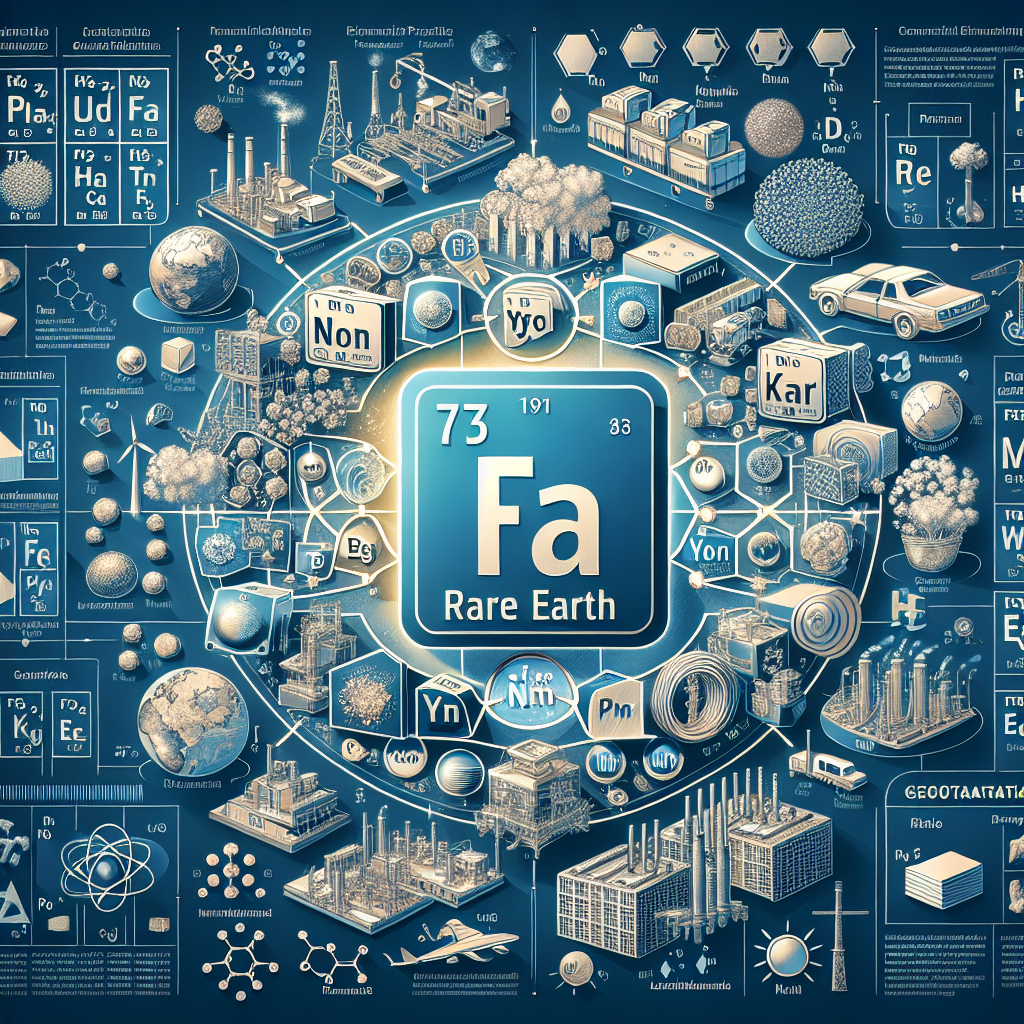A detailed insights on Rare Earth Metals
1. Introduction to Rare Earth Metals
Rare earth metals, often referred to as rare earth elements (REEs), are a group of 17 chemical elements found in the periodic table. These include the 15 lanthanides, along with scandium and yttrium. Despite their name, rare earth metals are relatively abundant in the Earth’s crust, but their extraction and processing can be challenging and environmentally damaging. In the 21st century, the demand for these metals has surged due to their essential role in the manufacturing of high-tech devices, making them critical to various industries.
2. Usage of Rare Earth Metals
Rare earth metals are widely utilized across several sectors. For instance, they are crucial in the production of permanent magnets used in electric motors, wind turbines, and hard disk drives. Additionally, they find applications in catalytic converters in automobiles, phosphors in LED lights, and batteries. Statistics show that the global market for rare earth elements is expected to grow from approximately $5.5 billion in 2020 to over $12.5 billion by 2026, reflecting a compound annual growth rate (CAGR) of 14.38%.
3. Key Rare Earth Metals and Their Properties
The most prominent rare earth metals include neodymium, dysprosium, and lanthanum. Neodymium is known for its powerful magnetic properties and is widely used in magnets for electric vehicles. Dysprosium is added to neodymium magnets to enhance performance at high temperatures. Lanthanum is essential in manufacturing catalysts for refining petroleum. The combined properties of these metals contribute significantly to advancements in technological innovations.
4. Global Distribution of Rare Earth Metals
China currently dominates the rare earth metal market, accounting for nearly 60% of the global production. Other countries with significant deposits include Australia, the United States, Brazil, and Russia. In 2021, China produced approximately 168,000 metric tons of rare earth metals, which highlights its role as the leading supplier. This geographical concentration raises concerns over supply chain vulnerabilities and geopolitical tensions, as many nations strive to secure their own sources of these vital materials.
5. Environmental Impact of Rare Earth Mining
Mining rare earth metals often leads to severe environmental consequences. The extraction process generates toxic waste, which can contaminate soil and water sources. A report indicated that mining operations in China resulted in significant land degradation and pollution in nearby communities. Sustainable mining practices and recycling methods are essential to mitigate these environmental impacts. A push for greener technologies in the industry is becoming increasingly important in efforts to minimize ecological harm.
6. Technological Innovations in Rare Earth Metals
The demand for rare earth metals has spurred innovative technologies aimed at more efficient extraction and processing. Advanced separation techniques, such as solvent extraction and ion exchange, are being developed to reduce waste and improve yield. Additionally, increased research into alternative materials aims to decrease reliance on rare earth metals. For instance, scientists are exploring the use of iron and cobalt as substitutes for some applications, which could change the landscape of the industry.
7. The Future of Rare Earth Metal Supply
The future supply of rare earth metals faces both challenges and opportunities. As the demand for clean energy solutions increases, particularly with the rise of electric vehicles and renewable energy technologies, the need for rare earth elements will likely continue to grow. However, securing a diversified supply chain will be critical to meeting this demand. Countries like the United States and Australia are investing in new mines and technologies to increase domestic production and reduce dependence on China.
8. Recycling of Rare Earth Metals
Recycling is becoming a crucial method of managing rare earth metals, especially as supply concerns grow. Current estimates suggest that only 1% of rare earth elements from electronic waste are recycled. However, advancements in recycling technologies are expected to increase this figure. In 2023, the European Union announced plans to establish a circular economy for rare earths, with a goal of recycling up to 50% of rare earth metals from electronic waste by 2030. This shift is essential for ensuring a more sustainable supply chain.
9. Economic Implications of Rare Earth Metals
The rare earth metals market has significant economic implications at both national and global levels. Countries rich in these resources can experience economic booms through mining operations and exports. Conversely, nations dependent on imports face economic risks due to fluctuating prices and supply shortages. The market has experienced substantial price volatility over recent years, with certain rare earth elements increasing in cost by over 300% in a single year due to geopolitical tensions and trade disputes.
10. Conclusion
The landscape of rare earth metals is complex, shaped by technological advancements, geopolitical dynamics, and environmental considerations. As industries continue to evolve towards greener practices, the role of rare earth metals will remain crucial. Investing in sustainable mining, recycling, and alternative materials will be imperative in ensuring a balanced approach for the future. Those who navigate this intricately woven industry with foresight and responsibility stand to benefit the most in the coming decades, both economically and environmentally.



Post Comment